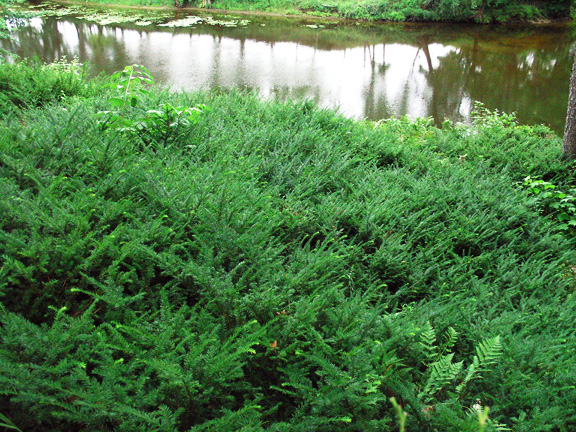
Woody > Taxus > Taxus canadensis > Taxus canadensis
Taxus canadensis
Canada Yew
Origin: Newfoundland to Virginia, Tennessee, Iowa and Manitoba; introduced into cultivation in the U.S. in 1800.
Mike's
Opinion


"
Unfortunately not a notable landscape plant, however useful for medicinal purposes. The hardiest of the Yews, it is not surprising that this species is lacking in some way.
Michael Pascoe, NDP., ODH., CLT., MSc. (Plant Conservation)
"
| Family |
| Taxaceae |
| Genus |
| Taxus |
| Species |
| canadensis |
| Category |
| Woody |
| Type |
| Shrub (evergreen) |
| Pronunciation |
| USDA Hardiness Zone |
| 2-6 |
| Canadian Hardiness Zone |
| 1-5 |
| RHS Hardiness Zone |
| H7 |
| Temperature (°C) |
| -46 |
| Temperature (°F) |
| -50 |
| Height |
| 2 m |
| Spread |
| 2.5 m |
Photographs
Description and Growing Information
Flowering Period
| General Description |
| A low growing shrub; loose, unattractive form. Not often used in the landscape; hardiest of the yews. Valued for its taxanes, which is a chemical produced by the plant used in cancer drugs. |
| Landscape |
| Not commonly used in the landscape because of its unattractive form. Can be used for groundcover and bonsai. |
| Cultivation |
| Shade tolerant and extremely hardy, but not tolerant of disturbances like logging and wildlife. Can transplant balled and burlapped; likes moist soil. If grown in cultivation and annual pruning will help maintain it appearance. |
| Shape |
| Loose and spreading. |
| Growth |
| Medium |
| ID Characteristic |
| 2-ranked needles, sharp pointed leaf apex, reddish brown bark. |
| Pests |
| Not notable. Can be partial to Taxus mealybug and Taxus scale. |
| Habitat |
| Grows in bogs and out of sandstone cliffs. Understory plant of late successional forests. |
| Bark/Stem Description |
| Nearly smooth and very thin, but ornamentally unimportant. |
| Flower/Leaf Bud Description |
| 1-2 mm long, yellow green. Obovate, imbricate. |
| Leaf Description |
| Two-ranked needles, 13-19 mm long, 1-2 mm wide; short-pointed tip. Short-stalked. |
| Flower Description |
| 7-13 mm flower buds occur on the underside of the stem. Flowers monoecious, and self fertile; pollinated by the wind. |
| Fruit Description |
| Light red arial; seed surrounded by cup-like flesh. Seeds broader than high and is olive green in colour. |
| Colour Description |
| Leaves dark green on top, pale underside with white markings. Flesh of the fruit light red. |
| Texture Description |
| Medium; soft foliage and fruit, bark smooth. |
| Notable Specimens |
| The Rock Chapel at The Royal Botanical Gardens, Hamilton, Ontario, Canada |
| Propagation |
| Cuttings most effective because seeding is very slow. If seeding, dormancy can be broken with warm then cold stratification. Procure wood between October and January; apply a hormone. Should root in 2-3 months. |



